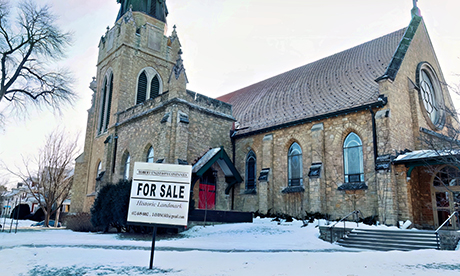The Diocese of Steubenville, Ohio, became the centre of controversy last year when Bishop Jeff Monforton announced to his priests in October that the diocese would be merged with the neighbouring Diocese of Columbus,
Priests of the diocese pushed back on the plan, arguing that they had not been consulted, and eventually, a planned USCCB vote on the prospective merger was scrapped.
But the possibility that Steubenville will be merged into Columbus is still real, and the diocese is now facing an audit meant to gauge its financial viability.
Some of Steubenville’s diocesan challenges are specific to its recent financial history.
During the summer of 2020, both former diocesan comptroller David Franklin and former diocesan vicar general Monsignor Kurt Kemo admitted in court that they had embezzled large sums from the financially struggling diocese.
But Steubenville is a small diocese with a declining population and limited resources. It faces demographic and financial challenges that a number of small dioceses in the Midwest and Northeast will face in the coming decades.
Some priests of the Steubenville diocese have urged that the diocese could have a positive future — they point to its vocations numbers and the prospect of both stabilized finances and growth by a renewed focus on evangelization.
But other analysts have argued that the diocese is too small to remain sustainable despite those positive points.
If that’s true, it raises questions about other U.S. dioceses.
Steubenville is not the smallest diocese in the country. If a merger is going to happen there, what other U.S. dioceses might be candidates for the same future? And where does Steubenville stand among them?
Dioceses great and small
Since the early Church, the Catholic diocese has been the local geographical expression of the Church’s nature as a hierarchical and sacramental communion.
A diocese has set geographical boundaries that usually align with civil governmental boundaries.
In the U.S., most diocesan boundaries follow the borders of counties and states.
The Holy See has generally tried to see that the geographic territory of a diocese is not so large that a bishop can’t effectively govern the entirety or travel to all parts within reasonable amounts of time.
But the Vatican has also been attentive to population: When the Catholic population of a region grows, dioceses sometimes need to split if they become just too populous to be governed by a single bishop.
In fact, the Diocese of Steubenville is the product of one such split — it was carved from the Diocese of Columbus in 1944.
When those dioceses were split, both local churches were of relatively similar size, and both were growing.
In 1950 the Steubenville diocese contained 62,000 Catholics, while the Columbus diocese contained 106,000.
But since then, the Diocese of Columbus has grown to almost 300,000 Catholics while the Diocese of Steubenville has shrunk to 30,000.
Of course, the Holy See does not apply consistent standards around the globe about the “right” size of dioceses, either in terms of Catholic population or geographic area. And mergers and splits are often initiated by local bishops, who sense that particular situations have become unmanageable. Continue reading
Additional readingNews category: Analysis and Comment, Great reads.




